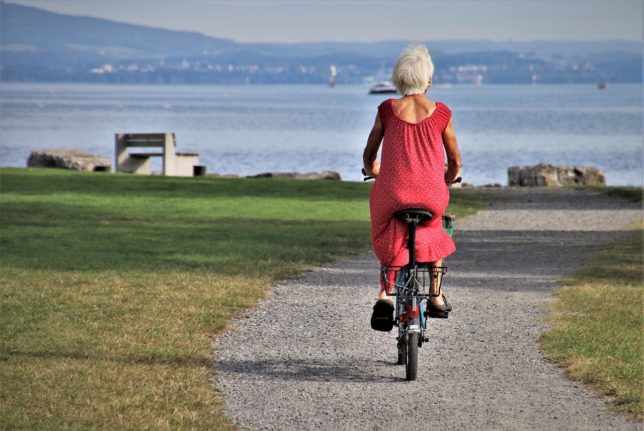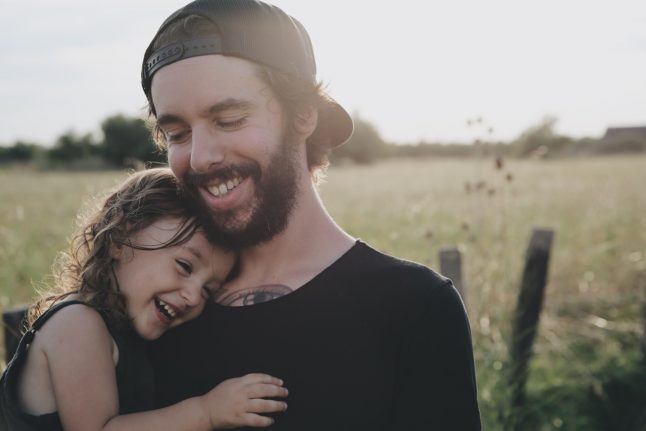According to the Swiss Federal Statistical Office, almost two-thirds of employed persons in Switzerland have a pillar 3a account. Ahead of the referendum on March 3rd, when voters will decide whether retirees in Switzerland should receive an additional monthly pension to help them make ends meet, public broadcaster RTS analysed their financial situation.
READ ALSO: What’s at stake in Switzerland’s March 3rd referendum?
The RTS based its findings on official data from the Federal Statistics Office (FSO).
The picture that emerges is far from clear, but reveals interesting facts nevertheless.
What do the study’s findings indicate?
The broadcaster analysed the finances from different angles, starting with the general look at the seniors’ ‘financial health’.
In this regard, many retirees are experiencing some difficulties: nearly one in six seniors (15.4 percent) live on an income that is below the poverty level, defined in Switzerland as 2,289 a month for a single person.
Of this sum, most usual expenses must be paid, except for the full amount of health insurance premiums, and possibly rent as well, both of which, at this income level, would likely be subsidised by the government — that is, eligible for cost reductions.
In all, out of this segment of the population, 6.4 percent actually struggle to make ends meet.
However, by far not all pensioners struggle financially: many have accumulated assets that are more sizeable when compared with the rest of the population.
In fact, one in two retirees have more than 100,000 francs in assets.
Two factors contribute to this ‘increase in wealth’ at the time of retirement.
One is that the older the person is, the longer time he or she has had to amass savings.
Another reason is that many retirees take, at least in part, funds from their 2nd and 3rd pension pillars in the form of capital.
READ ALSO: What is Switzerland’s ‘2nd pillar’ pension and how you will benefit from it?
A study carried out by UBS bank indicated that almost two-thirds of employed people in Switzerland have all three pillars which, together, ensure a relatively comfortable life after retirement-
How many seniors find themselves in a truly precarious situation?
According to RTS, that 6.4 percent of people mentioned above are predominantly those who only have the obligatory first-pillar pension (AHV / AVS) as their main (or only) source of income.
Majority of them are single people, those without post-compulsory education, or of foreign nationality, the study shows.
Among this group, which constitutes a clear minority among Swiss retirees, 25 percent live under the poverty threshold (as defined above), versus 1.9 percent of the ones who receive the second pillar income as well.



 Please whitelist us to continue reading.
Please whitelist us to continue reading.
RE: “one in two retirees have more than 100,000 francs in assets”.
Well, 100k implies about 425CHF/month over retirement, Yes, that will help with groceries but not much more.
The other half is in trouble.
RE: “two-thirds of employed people in Switzerland have all three pillars whichensure a relatively comfortable life”.
You provide no fact to support this. Accordingly, the statment is at best “wishful thinking”.
The more interesting question is “How do people survive in retirement?”.
Thank you for your comment.
Regarding your first point, the 100,000 in assets covers savings, investments, etc. which retired people have in addition to the monthly payouts.
Secondly, you say we “provide no fact” to support the statement that “two-thirds of employed people in Switzerland have all three pillars.” If you look at the article, you will see that this statement is linked to a UBS study that mentions this fact, which, in turn, is based on data from the Federal Statistical Office.
And since all employed people must have the second pillar (occupational pension), in addition to first pillar (AHV / AVS), the proportion with all three pillars is, as the study and the article point out, two-thirds.
Hope to have clarified this point for you. Regards, Helena Bachmann, The Local.